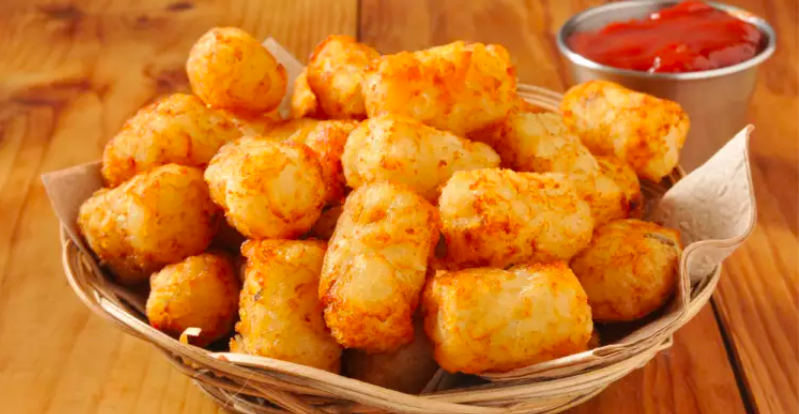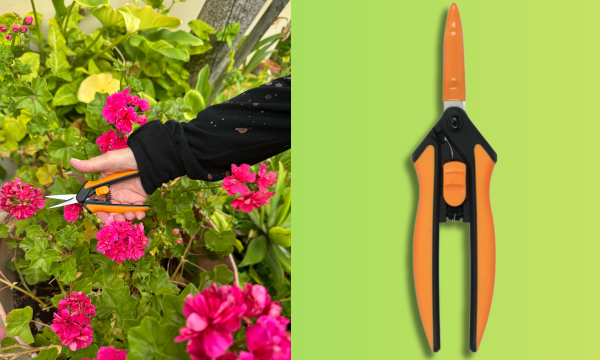Yes, as we know there's a holiday for everyday. March 31st is not only National Crayon Day… but it's National TATER Day! Celebrating all things tater and crispy made from the beloved potato.
Perfect for parents who are at home with the kids, here's a scrumptious recipe for TATER TOTS! And while you're at it, why not plant your own potatoes in your garden! There is nothing quite like a homegrown potato. The flavor can’t be beat, and potatoes are quite easy to grow. A new variety called Keuka Gold (pronounced Que-kah) is a wonderful, golden-fleshed potato that tastes great when boiled or baked. Developed by Cornell University, Keuka Gold is the best golden potato for producing big yields in organic growing conditions.
Keuka Gold is a terrific golden potato (similar to Yukon Gold) that is an exceptionally reliable producer of delicious potatoes that store well. A 2.5-pound bag of organic seed potatoes from Wood Prairie Family Farm sells for $16.95, and larger bags are available—all the way up to 50 pounds. Order directly from the grower at WoodPrairie.com.
Tater Tot Recipe
What you need:
- 1 1/2 pounds baking potatoes (about 3 large)
- 2 cups cold water
- 1 tablespoon unflavored gelatin
- 2 tablespoons Wondra (instant) flour
- Salt to taste
- Peanut or canola oil for deep-frying
Fleur de sel to taste
What to do:
- Preheat the oven to 250°F (121°C). Position a rack in the center of the oven.
- Peel and rinse the potatoes. Cut each potato lengthwise in half and then lengthwise in half again to make 4 wedges. Cut each wedge crosswise into 4 pieces. Place the potato chunks in a food processor with the cold water and pulse until the potato chunks are about a 1/4 inch or so. They don’t need to be totally consistent in size, but do be careful not to overprocess them.
- Dump the potatoes in a colander and rinse them under cold running water, shaking the strainer to remove as much water as possible, then spread the potatoes on a towel. Cut any rebellious potatoes that are larger than a 1/4 inch into smaller chunks. Place another towel on top and then roll the towels up tightly to remove all excess moisture from the potatoes.
- Spread the potatoes in an even layer on a baking sheet. Place the gelatin in a small dry sieve or tea strainer and sprinkle it evenly over the potatoes. Place the potatoes in the oven until the gelatin has melted, 4 to 5 minutes. The potatoes will appear oily because of the gelatin; this is okay. Remove the pan from the oven and set aside to cool slightly.
- Transfer the potatoes to a bowl and mix well with a rubber spatula to evenly distribute the gelatin. Mix in the flour and salt to taste.
- Lightly rub your work surface with water, then place a piece of plastic wrap at least 18 inches long on the work surface with the short end toward you. The water will anchor the plastic to the counter. Place half the potato mixture on the plastic, about 6 inches from the edge closest to you, and use your hands to shape it into a log approximately 8 inches long, pressing the potatoes to hold them together. Lift the edge of the plastic wrap closest to you up and over the log, bringing it down on the far side of the potato mixture. Roll it into a compact log, using the ruler or the back of a chef’s knife to push against the roll as you compress it. If necessary, squeeze the plastic at the ends to compact the mixture as you roll. The finished log should be about 1 1/2 inches in diameter. Twist the ends of the plastic and tie them tightly with kitchen twine. If there are any air spaces in the potatoes that are visible through the plastic, prick a small hole in the plastic to release the air. Repeat with the remaining potatoes to make a second log.
- Place the logs in the freezer just until firm enough to slice, 30 to 60 minutes. Do not freeze the potatoes for longer or they may turn brown.
- For the first frying, heat the oil in a deep fryer or heavy pot to 375°F (190°C). Remove the logs from the freezer. Cut off the ends of the rolls, slicing through the plastic, then cut each roll, right through the plastic, into 3/4-inch-thick slices, about 10 per roll. Remove and discard the plastic. Fry the spuddies in small batches until golden brown, about 3 minutes. Transfer to a plate or tray.
- For the second frying, reduce the oil temperature to 325°F (163°C). Fry the potatoes, again in batches, for about 2 minutes, until richly browned and crisp. Drain the potatoes on paper towels, and sprinkle with fleur de sel. Watch them disappear. [To freeze the spuddies, just cook them for a minute less than directed in the second frying, then plonk the cooked potatoes in a single layer on a baking sheet and transfer to the freezer. Once the spuddies are frozen, transfer to resealable plastic freezer bags. To serve, spread the frozen potatoes on a baking sheet to defrost at room temperature. Warm in a 400°F (204°C) oven until hot and crisp, 5 to 8 minutes.]
Enjoy!














